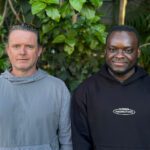Whether you’re a seasoned ally or wanting to learn more about the LGBTQIA+ community, it’s important to familiar yourself with the community’s definitions and terms so that you can understand and respect our diverse campus community.
We’re here to unpack key LGBTQIA+ terms, help you navigate the alphabet soup and provide some tips to help our community foster a culture of inclusivity and respect on campus.
Let’s start with the basics
LGBTQIA+ is an acronym that describes the community of individuals who have diverse sexual orientation, sex and/or gender identity. It stands for Lesbian, Gay, Bisexual, Transgender, Queer, Intersex and Asexual/Aromantic.
LGBTQIA+ is a shortened version of the full acronym that encompasses many identities, including Questioning (Q), Pansexual (P), Non-Binary (NB), Brotherboy (BB), Sistergirl (SG), and many more. All these terms are represented in the shortened version by the plus sign.
Learn these key definitions:
Gender
Gender is about social characteristics of a person. It refers to the identities, expressions and behaviours of an individual as a man, woman or gender diverse person.
Gender diverse
Gender diverse is an umbrella term that includes all the different ways gender can be experienced and perceived. It can include people questioning their gender and people who identify as trans or transgender, genderqueer, non-binary, gender non-conforming and more.
Gender expression
Gender expression is how someone outwardly expresses their gender, for example:
- Masculine: qualities or appearance we usually associate with men.
- Feminine: qualities or appearance we usually associate with women.
- Androgynous: qualities or appearance that combine masculine and feminine characteristics into an ambiguous form.
Gender identity
Gender identity is about how a person feels; for example, whether they feel they are a man, woman or non-binary person. Someone’s gender identity can be different to their biological sex.
Gender Pronouns
Pronouns are part of a person’s gender expression, and someone can have multiple sets of pronouns they use to refer to themselves. For example, someone can both use They/Them and He/Him to identify. Pronouns are not preferred, they are required for respectful communication.
Non-binary
Genders that sit outside of the man/woman binary are often called non-binary. A person might identify solely as non-binary, or they might relate to non-binary as an umbrella term and consider themselves genderfluid, genderqueer, trans masculine, trans feminine, agender, bigender, or something else.
Queer
Queer is sometimes used as an umbrella term for people who are not heterosexual or cisgender. It has historically been used negatively to describe those with same sex desires, but began to be reclaimed by activists in the 1980s and is now used by many in the LGBTQIA+ community.
It is important to note that some people still dislike this term, because of its history.
Sex
A person’s sex is based on biological characteristics like their chromosomes, hormones and reproductive organs. It is usually assigned at birth as either male, female or intersex, but a person’s sex can change over the course of their life and may differ from their sex recorded at birth.
Sexual orientation
Sexual orientation is an umbrella term that includes someone’s sexual identity (how they think of their sexuality and what terms they identify with), attraction (who they are romantically or sexually interested in) and sexual behaviour.
Someone may describe their sexual orientation as lesbian, gay, bisexual, asexual, or something else.
Want to help foster an inclusive environment at Curtin? Here are some of our tips.
#1 Watch the below video for an in-depth explanation of the community
#2 Become a Curtin Ally
The Curtin Ally program helps create a safe, inclusive university environment that celebrates the unique talents and perspectives of LGBTQIA+ people.
To join the Ally program, complete our LGBTQIA+ Awareness Training to gain an awareness and understanding of contemporary challenges and barriers LGBTQIA+ people.
#3 Chat to the Queer Department at the Guild
The Guild’s Queer Department is an invaluable service for any Curtin student who identifies as sexually or gender diverse. It provides support, advocacy and a safe space for queer-identifying students and allies.
Zavier Wileman (They/Them) is the Queer Officer at the Guild for 2024. They’re here to support any student who identifies as sexually or gender diverse, ensuring representation within the University and can assist with any problems that may arise.
Follow the Queer Department on Instagram, or send Zavier an email.
Learn more about how Curtin welcomes, respects, and values all students’ regardless of your sexual orientation, gender identity, biological sex, or gender expression on our LGBTQIA+ webpage.
Everyone deserves the right to feel safe, included and valued on campus – and it all starts with respect.
Respect at Uni Week is a great opportunity to learn how Curtin is fostering a culture of respect, care and safety on campus. Get involved in a range of activities and workshops and discover how you can make our uni safer for everyone.



